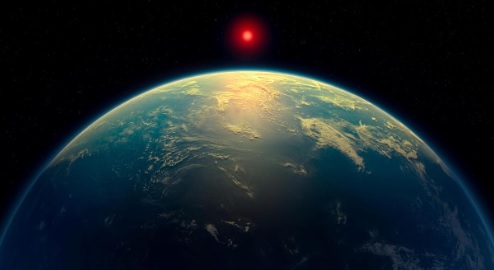| (Prelims: Science and Technology) |
Context
Recent data from Kepler and the James Webb Space Telescope (JWST) indicate that Earth-sized planets are not very rare in the universe. However, the conditions necessary for complex life on such planets are still considered extremely rare. This question is the root of the "Rare Earth Hypothesis."

What is the Rare Earth Hypothesis?
- This hypothesis was proposed in 2000 by paleontologist Peter Ward and astronomer Donald Brownlee.
- Its main argument is that microbial life may be common in the universe, but complex multicellular life is extremely rare.
- This idea is based on the assumption that the simultaneous occurrence of several factors necessary for life on a planet, such as water, atmosphere, temperature, magnetic field, and a stable climate, is extremely unlikely.
Discoveries of the Kepler and James Webb Telescopes
- According to data from the Kepler mission (2009–2018), the Milky Way contains many Sun-like stars with Earth-sized planets around them.
- Some studies estimate that approximately 20% of stars host Earth-like planets in their habitable zones.
- This weakens the notion that Earth-like conditions are extremely rare.
- The question has now shifted from "where is the planet" to "what is the planet like."
The question of the planet's true nature
- Both Earth and Venus are in the Sun's habitable zone, but Venus's dense carbon dioxide atmosphere makes it inhospitable to life.
- This makes it clear that distance alone is not enough; atmospheric composition and water stability are equally important.
The Challenge of M-Dwarf Stars and Planets
- M-Dwarf stars are the most common in the universe, but they emit intense ultraviolet radiation.
- This radiation strips water from planets' atmospheres, creating false oxygen-rich atmospheres that appear to be signs of life, but are actually the result of natural radiation.
- Some planets, with strong magnetic fields or those far from the star, may retain their air, but such planets are rare.
The Role of the James Webb Space Telescope
The planets of the TRAPPIST-1 system studied by JWST:
- TRAPPIST-1c was found to lack a dense CO₂ atmosphere.
- TRAPPIST-1b was also found to lack a substantial atmosphere.
This shows that having an Earth-like size does not equate to having an Earth-like atmosphere.
Climate Stability and Plate Tectonics
- Plate tectonics is the primary cause of Earth's climate stability.
- It recycles carbon from the interior to the surface.
- It maintains long-term temperature balance.
- But this process is not the same for all planets.
- Some planets have a rigid crust that is not dynamic.
- Some experience intermittent geological activity.
- Scientists are still not agreed on whether plate tectonics is necessary for complex life.
Role of Giant Planets Like Jupiter
- It was previously believed that Jupiter protects Earth from meteorites, but recent studies have shown that its effect depends on the circumstances.
- In some situations, it can deflect dangerous objects,
- and sometimes send them inward.
- This weakens the claim that a "Jupiter-like planet" is necessary for life in any system.
Life is not rare, but complex life is still rare.
- According to current scientific understanding, microbial life is probably common, but long-term complex ecosystems (like the combined life of land and water on Earth) may be extremely rare.
- That is, Earth-sized planets may be abundant in habitable zones, but finding them with environments that support life like Earth's is still a rare possibility.
The Way Forward
- Three future scientific discoveries could challenge this hypothesis:
- If an Earth-like planet around a cool, Sun-like star is discovered to have an atmosphere with a water cycle.
- If evidence of stable climate processes like plate tectonics is found.
- If biological (biosignatures) or technosignatures are found on a planet.
- The James Webb Telescope and upcoming Extreme Large Telescopes (ELTs) will play a crucial role in this direction.



